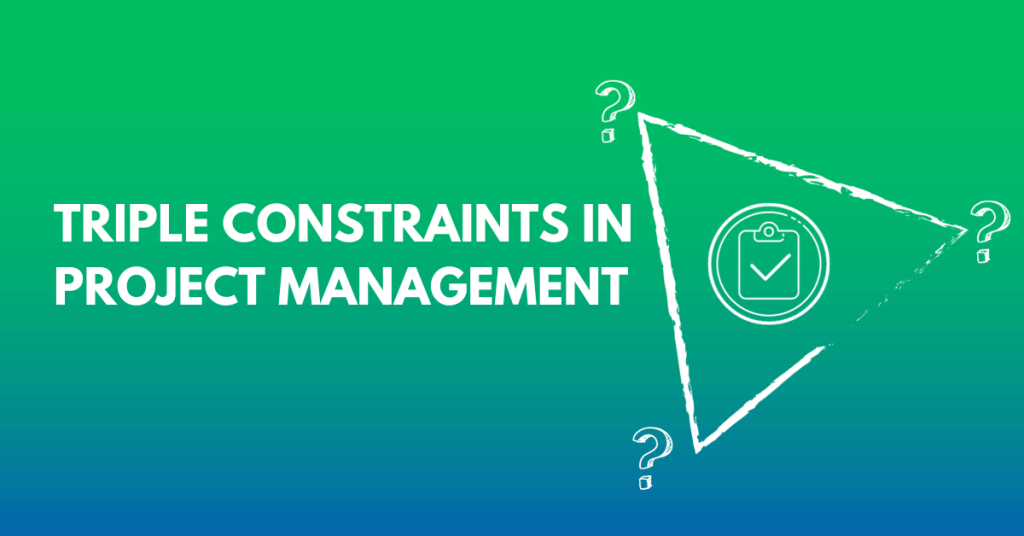
Managing a project is like piecing together a puzzle. You aim for a clear picture while working within certain limits. One framework guiding project managers worldwide is “Triple Constraints in Project Management.” This simple yet essential concept focuses on three main elements: scope, time, and cost. Think of them as the three pillars holding up a successful project. Get them right, and your project will stand tall. Miss one, and things might wobble. Come with me to explore this topic and see how important it is to make a project great!
What’s the Triple Constraint? It’s a core idea in project management. It has three parts. For a project to succeed, you must balance these. Each one affects the other two.
- Scope
- Time
- Cost
But where did this idea come from? It’s not new. Long ago, project managers knew they had to control some things. Over time, they found these three to be key. Many big projects in history followed this. The building of the Panama Canal is a great example. They had a set scope, budget, and deadline. When one changed, the others felt the effect.
Today, the Triple Constraints guide managers everywhere. It’s a beacon in the stormy sea of projects. It has updates for modern project management tasks. So, there’s a hint: your project manager should be an updated person who follows the updated version of the triple constraints.
Three elements of the triple Constraints in project management
Scope, time, and cost are the three elements of the triple Constraint triangle in project management. Let’s have a brief idea about them.
Scope
When we talk about scope, it’s all about the tasks required to complete a project. Think of it like your to-do list. You can’t just toss in everything. You need to be clear on what’s in and what’s out. If you change the scope, it often means changing the time or cost. And that can mess up your whole plan. It’s like deciding to bake a bigger cake without more ingredients or time.
Time
Time’s simple, right? Nope. In projects, it’s more than just days or weeks. It’s about how long each task takes. And if one task is late, it can throw off others. Think of it like dominoes. You set them up in a line. If one falls early or late, it affects the next one. So, it’s key to track time and adjust as needed. You don’t want any surprises.
Cost
Money talks. Every project has a budget. That’s the money you can spend. Go over? You’ve got problems. Stay under? You’re the star. But you can’t just look at big expenses. You need to watch the little ones, too. It’s like shopping. A few extra items here and there, and soon you’re over budget. Always keep an eye on the money. And remember, quality matters, too.
The Balancing Act: Interrelationship Among the Triple Constraints
Imagine juggling three balls: scope, time, and cost. Now, let’s say one ball gets bigger or changes shape. Can you still juggle smoothly? Probably not. That’s the dance project managers do daily.
Change scope? It’s likely you’ll need more time or money. For example, add more features to a phone app, and it’ll probably take longer to create. Plus, you might need to hire extra hands.
Adjust time? The scope and cost get shaken up. Say a project deadline moves up. Suddenly, you may need to trim some tasks (scope) or put in extra cash for overtime or faster shipping (cost).
Play with the budget? Time and scope will feel it. Cutting the budget might mean less quality or fewer features. On the other hand, adding funds could speed up delivery.
So why even bother with this tricky dance? Well, projects succeed when everything’s in sync. If one part goes off, risks rise. And nobody wants a project to fail. So, for managers, keeping this trio in harmony isn’t just smart—it’s a must. Short, regular check-ins can help track the pulse, ensuring everything stays on the right track. Keeping it all balanced? That’s the real magic.
Triple Constraints for Modern Project Management
The triple constraints used to be simple: scope, time, and cost. But as projects evolved, so did the framework. Now, we’ve got six main elements.
- Scope
- Time
- Cost
- Risk
- Benefit
- Quality
Why the change? Today’s projects are more complex and demand a broader view. Here are the three newer elements making waves:
- Risk: Modern projects face more uncertainties. It’s not just about doing tasks on time but also predicting what could go wrong. It’s the weather forecast for projects. Too much rain or a sudden storm can turn everything upside down.
- Benefit: We used to focus just on getting things done. Now, it’s about the value a project brings. Will this new app actually help users? If you’re making a sandwich, is it tasty or just plain? It’s the difference between doing things right and doing the right thing.
- Quality: This isn’t just about a project looking good on the outside. It digs deeper. Think about buying a car. You don’t just want it to look nice. It has to run well, be safe, and last a long time. That’s quality in action, ensuring the project’s output stands strong.
Benefits of Prioritizing the Triple Constraints with All 6 Elements
The game has changed in project management. With six big elements now – scope, time, cost, risk, benefit, and quality—the stakes are high. But, handle them right, and the payoffs are sweet. Here’s why they matter:
- Ensuring project success: Get the six elements in tune, and it’s about setting your project on a path to winning. It’s like baking. A professional project manager will get the ingredients, timing, and temperature right, and you’ll have a cake to taste.
- Meeting client expectations and delivering value: When we pay attention to all six, we’re not just ticking boxes. We’re giving clients what they want and adding real value. It’s like ordering a pizza and getting extra toppings for free. Who doesn’t love that?
- Minimizing risks and unexpected issues: With a focus on these elements, your project is prepared for any upcoming challenge. Then, we can spot trouble and dodge it. And if problems show up? We’ve got a plan. It’s the confidence of having an umbrella when dark clouds roll in.
In short, the more we care about these six, the smoother your project runs. So, continue with a professional technical project manager and watch your projects transform from good to great.
Conclusion
The triple Constraints in project management isn’t just a catchy phrase. It’s the backbone of every successful project, old and new. With scope, time, and cost as the original pillars, the additions of risk, benefit, and quality make it even more robust. By understanding and respecting this framework, projects find their rhythm. It’s not just about completing tasks. It’s about bringing value, minimizing hurdles, and delivering on time. So, next time you see a project flourish, remember the dance behind it. It’s the art and science of the triple Constraints in action.








